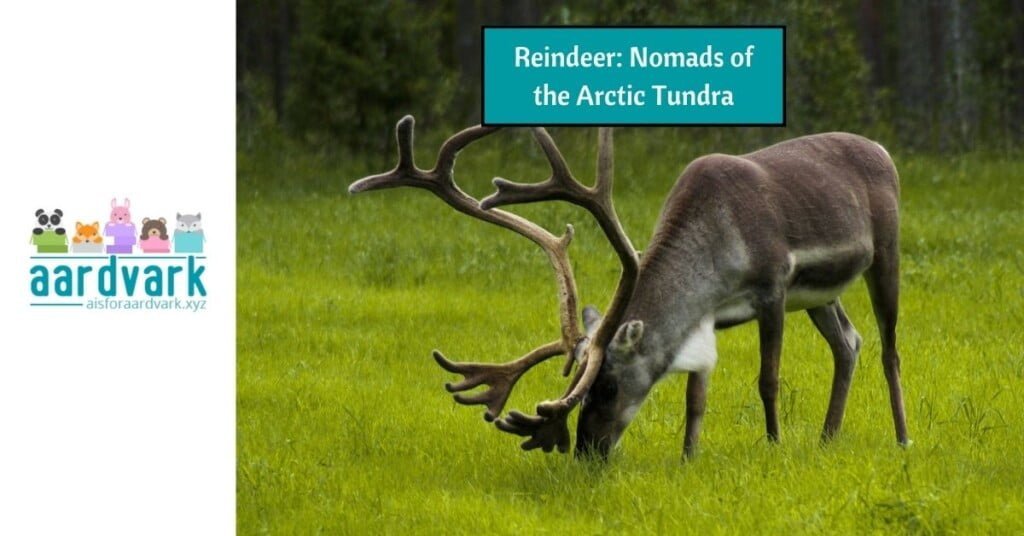Reindeer, known as caribou in North America, are fascinating members of the deer family, uniquely adapted to the harsh climates of the Arctic and sub-Arctic regions. Unlike other deer species, reindeer are well-equipped for survival in cold environments, showcasing distinctive features and behaviors.
This article delves into the world of reindeer, exploring how and where they live and how they’ve become a part of human culture.
Species Diversity and Habitats
Reindeer all belong to one species, but there are several subspecies that vary slightly in appearance and habitat range. These subspecies inhabit the Arctic tundra mountainous regions of Northern Europe, Siberia, Alaska, and Canada. Their habitats are characterized by extreme temperatures, minimal vegetation, and seasonal changes that demand remarkable adaptability.
Physical Characteristics and Adaptations
Reindeer, uniquely adapted to thrive in the cold environments of the Arctic tundra and sub-Arctic forests, exhibit several distinctive features and behaviors that set them apart from other deer species. Their fur is thick and dense, offering crucial insulation against freezing temperatures. This fur undergoes a seasonal color change, transitioning from a lighter shade in winter to a darker brown in summer, aiding in camouflaging the reindeer against predators and the environment.
Both male and female reindeer grow antlers, a rare trait among deer species, which are shed and regrown annually. The size of the antlers can vary widely. Males typically have larger antlers extending up to 1 meter (about 3 feet) in width, used during the mating season to compete over mates. Females have smaller, more compact antlers used for foraging in the snow for food.
Physically, reindeer are robust animals. Adult reindeer can stand at about 1.2 to 1.5 meters (4 to 5 feet) at the shoulder, with body lengths ranging from 1.8 to 2.2 meters (5.9 to 7.2 feet) from the head to the base of the tail. They can weigh between 150 to 300 kilograms (330 to 660 lbs), depending on the subspecies, sex, and season. Their large, broad hooves are another critical adaptation; not only do they support the reindeer’s weight on snow, preventing them from sinking, but they also change from soft in the summer to provide grip on the wet ground to hard edges in the winter to cut into ice and hard snow.
Reindeer have impressive lifespans for wild animals, often living up to 15 years in the wild. However, some individuals in captivity have been known to reach ages of over 20 years. This longevity, combined with their ability to traverse vast and inhospitable landscapes, underscores reindeer’s resilience and adaptability to their environment.
Lifestyle: Migration and Social Structure
Reindeer are renowned for their long migratory patterns, with some herds traveling up to 5,000 kilometers (3,100 miles) annually, making it one of the longest migrations of any land mammal. The search for food, mating opportunities, and calving grounds drives these migrations.
Socially, reindeer live in large herds that can number in the thousands. These herds provide protection against predators such as wolves and bears. The social structure is complex, with a hierarchy influenced by age, sex, and antler size.
Diet and Foraging Behaviors
Reindeer are primarily herbivores with a diet that changes seasonally based on available vegetation. In the summer, they feed on various plants, including grasses, sedges, leaves, and mushrooms. In winter, they forage for lichens, known as “reindeer moss,” digging through snow with their hooves to access this vital food source.
Breeding Behaviors and Lifecycle
Reindeer mating season occurs in the fall, and competition among males for access to females can lead to dramatic antler clashes.
After a gestation period of about 7.5 months, females give birth to a single calf in the spring. Calves can stand and walk shortly after birth and quickly join the herd in its continuous search for food.
Predators of the Reindeer
Despite their adaptability and resilience, reindeer face threats from natural predators across their habitats. The primary predators of reindeer include wolves, which can take down an adult reindeer, especially those sick, injured, or isolated from the herd. Brown and polar bears also prey on reindeer, targeting calves or lone individuals.
Young reindeer are vulnerable to attacks from golden eagles and wolverines, which can pose a significant threat to newborn calves during the spring and early summer months.
The presence of these predators necessitates the reindeer’s social structure and migration patterns, as moving in large herds can help protect individuals from being singled out by predators. Additionally, the reindeer’s acute senses and agility play a crucial role in their survival, enabling them to detect and flee from threats before they become imminent. Despite these defenses, predation is a natural part of the ecosystem, contributing to the balance of predator and prey populations within the Arctic and sub-Arctic environments.
Role in Ecosystems
Reindeer play a crucial role in their ecosystems by influencing vegetation patterns and serving as prey for predators. Their grazing helps control the growth of tundra vegetation. At the same time, their migration patterns can affect the distribution of nutrients across vast landscapes.
Conservation Status and Threats
While reindeer populations are stable in some areas, others have experienced significant declines due to habitat loss, climate change, and industrial development. Conservation efforts focus on habitat protection and sustainable management practices to ensure the survival of these iconic Arctic nomads.
Cultural Significance
Reindeer have a rich cultural significance, especially among indigenous peoples of the Arctic, for whom they are a source of food, clothing, and tools. In global culture, reindeer are famously associated with Christmas folklore as the animals that pull Santa Claus’s sleigh.
To summarize, reindeer are remarkable animals adapted to some of the planet’s most extreme conditions. Their migrations, social structures, and interactions with their environment offer invaluable insights into the resilience of wildlife in the face of changing climates and human expansion. Protecting reindeer and their habitats is crucial for preserving the ecological and cultural heritage they represent.


